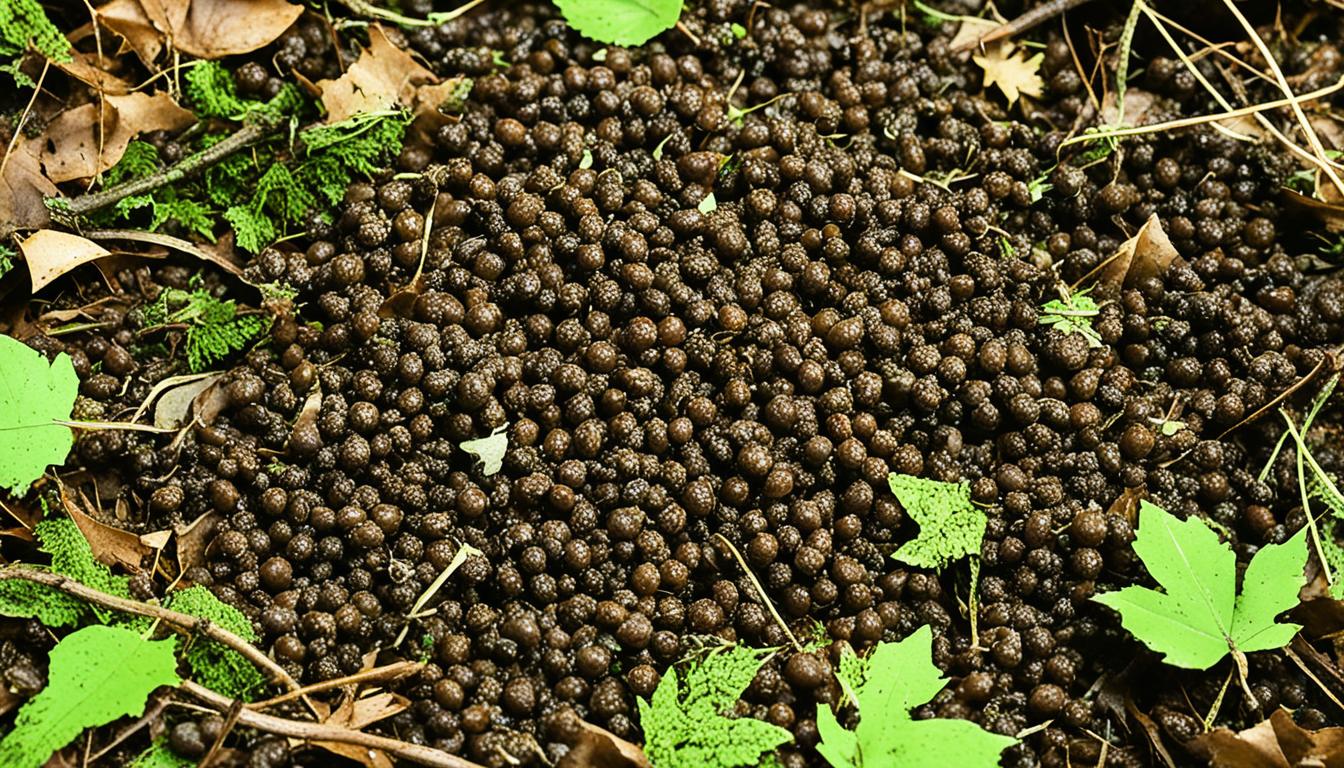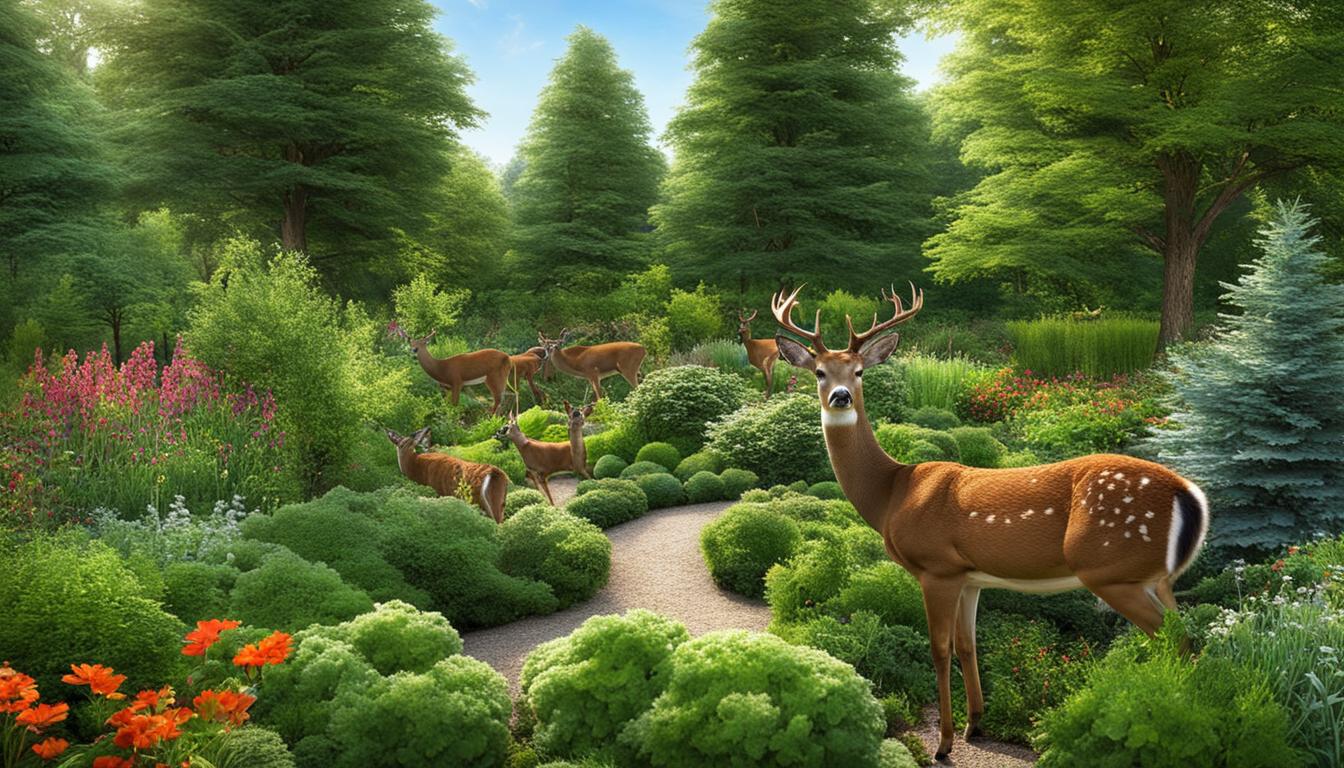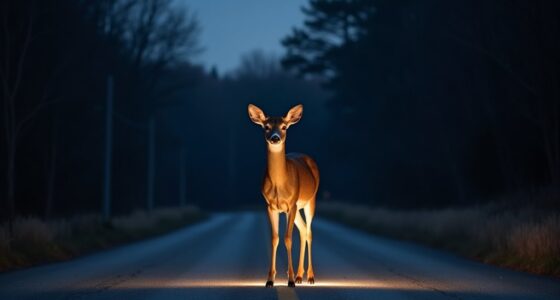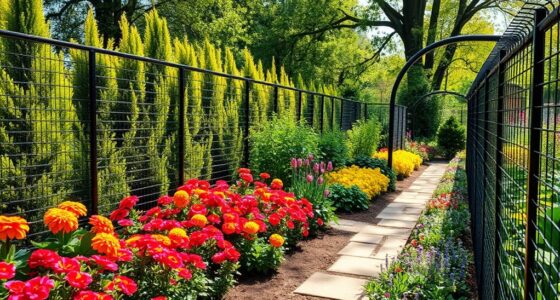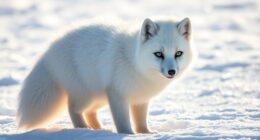Did you know that deer excrement can offer valuable insights into the behavior of deer? It can reveal where they feed, rest, and move, making it a vital tool for both hunters and nature enthusiasts. Recognizing deer feces accurately is essential for tracking wildlife and evaluating garden wellness. In this article, we will discuss the key features of deer droppings, distinguish them from other animal waste, and grasp their importance in tracking deer and promoting a flourishing garden.
Key Takeaways:
- Deer poop can provide insights into deer behavior, such as feeding and traveling patterns.
- Identifying the main characteristics of deer scat is essential for tracking wildlife and assessing garden health.
- Deer poop can be differentiated from other animal droppings based on its appearance.
- It is not possible to determine the sex of a deer based on its droppings alone.
- Deer scat can be used as a natural fertilizer in gardens, but precautions should be taken.
Main Characteristics of Deer Poop
Deer poop has several main characteristics that can help identify it. It consists of brown, oval-shaped pellets that are typically between .2 to .5 inches in length. When fresh, deer scat has a shiny, wet appearance. Some pellets may be tapered on one end, while others may be perfectly round. The consistency of deer poop can range from moist to fibrous depending on the water content of their diet. There is typically no visible food in the pellets, giving them a uniform appearance. Moister scat may have clumps of pellets pressed together, while dryer scat will have a more scattered appearance.
Key Characteristics of Deer Poop:
- Brown, oval-shaped pellets
- Size between .2 to .5 inches
- Shiny, wet appearance when fresh
- Variation in shape, with some pellets tapered and others round
- Consistency ranging from moist to fibrous
- No visible food, uniform in appearance
- Moister scat may clump together, while dryer scat appears more scattered
Quote:
“Deer poop can provide valuable insights into the behavior of deer, making it essential to recognize its main characteristics.”
By understanding the main characteristics of deer poop, you can easily differentiate it from other animal droppings. This knowledge will enable hunters and wildlife enthusiasts to track deer movements accurately. Additionally, being able to identify deer poop can help gardeners assess deer activity on their property and take appropriate measures to protect their gardens.
Deer Poop Look-Alikes
When it comes to identifying deer poop, it’s essential to be able to differentiate it from other animal droppings. Here are some common look-alikes to be aware of:
Rabbit Scat
Rabbit scat is usually a pile of round, brown pellets. In comparison, deer pellets are more oval in shape.
Bear Scat
Bear scat is much larger and less-formed than deer scat. It often contains food remnants such as fruit pits, nut shells, or even human food or trash.
Elk Scat
Elk scat is similar in appearance to deer scat but larger in size. The size difference can help in accurately identifying deer scat.
Pronghorn Scat
Pronghorn scat may have a more irregular shape and can look like small chocolate chips.
By familiarizing yourself with the distinguishing characteristics of these look-alikes, you can confidently identify deer scat when you come across it.
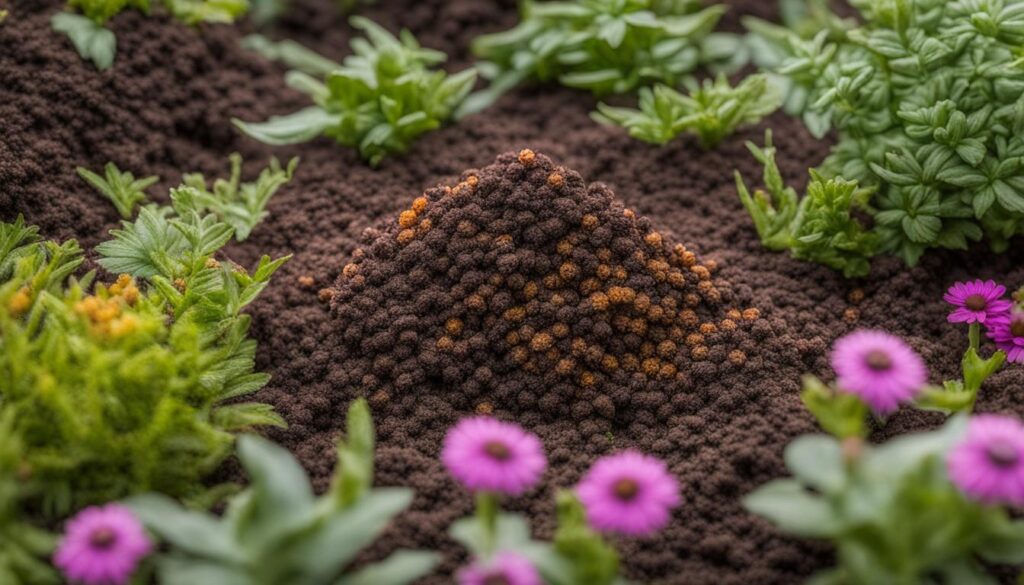
Buck vs. Doe Poop
Contrary to popular belief, it’s not possible to determine the sex of a deer based on their droppings alone. There is no discernible way to tell what produced a particular scat, whether it was a male or female deer. The size of the droppings can vary among individuals, with larger animals generally producing larger piles of pellets. Bucks may leave behind an average of 70 to 80 pellets, while does may leave an average of 50 to 60. However, these size differences cannot definitively indicate the sex of the deer.
Whitetail Poop vs. Mule Deer Poop
Whitetail poop and mule deer poop can be challenging to differentiate based solely on appearance. However, the primary distinction lies in their diet, heavily influenced by their respective regions. Whitetail deer inhabiting the eastern United States feed on a variety of lush, temperate-climate forbs and browse. On the other hand, mule deer in the Western and Southwestern regions have adapted to a diet dominated by shrubs.
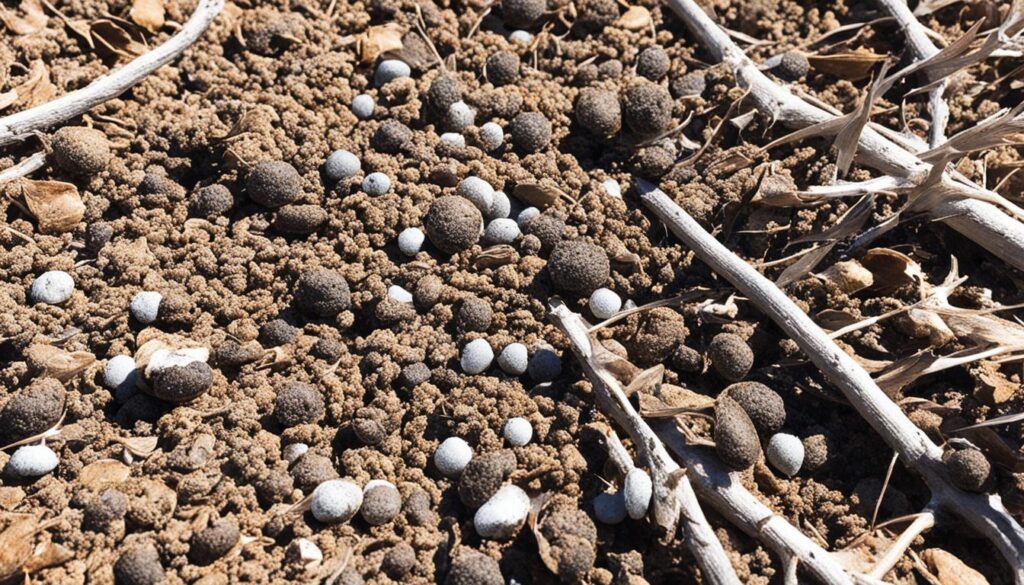
As a result of their dietary differences, mule deer scat tends to have lower moisture content and dries out more quickly in the arid climates of the West and Southwest. In regions where their ranges overlap, it becomes virtually impossible to differentiate between the scat of whitetail deer and mule deer.
The Importance of Deer Scat in Tracking and Gardening
Deer scat plays a vital role in tracking and understanding the behavior of deer. It holds valuable insights into their movements, feeding patterns, and favored resting places. Recognizing deer scat can be incredibly helpful for hunters, aiding them in identifying potential hunting spots and predicting deer movement. Additionally, deer scat serves as an essential indicator for gardeners, confirming the presence of deer on their property and allowing them to take necessary measures to protect their precious plants and flowers.
Moreover, deer scat is not only valuable to hunters and gardeners but also to scientists and researchers. It provides a wealth of information about herd health, hormone levels, and the presence of diseases like chronic wasting disease. Scientists study deer scat to understand the overall well-being of deer populations and make informed decisions for conservation efforts.
Understanding deer scat’s importance in tracking and gardening empowers individuals to make informed decisions in wildlife management and garden health. By learning to identify and analyze deer scat, enthusiasts can gain valuable insights into the lifestyle and habits of these majestic animals while simultaneously protecting their precious gardens.
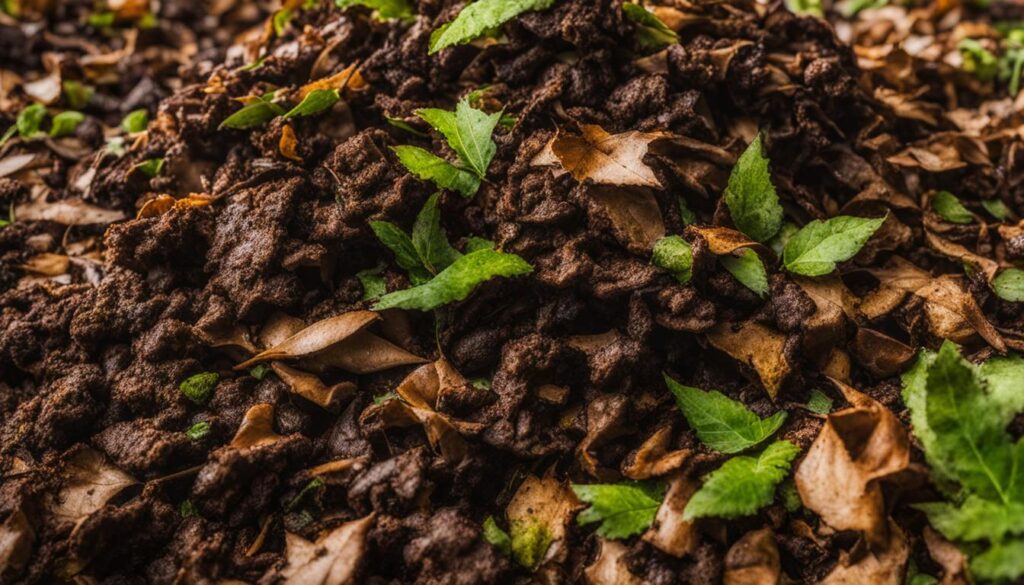
Deer Scat: A Closer Look
To fully appreciate the importance of deer scat, let’s take a closer look at its characteristics:
| Characteristics | Description |
|---|---|
| Shape | Oval-shaped pellets |
| Color | Dark brown |
| Size | Varies, but typically between .2 to .5 inches in length |
| Consistency | Moist to fibrous depending on the diet and water content |
By familiarizing yourself with these characteristics, you can easily distinguish deer scat from other animal droppings, ensuring accurate tracking and effective garden management.
Is Deer Poop Harmful?
Deer droppings are not typically harmful and are composed of plant matter that will break down over time. However, it’s important to exercise caution and avoid direct contact with deer droppings, especially if your yard is overrun with deer. While a few piles of deer droppings pose minimal risk to your backyard, pets, or gardens, it’s advisable to fence off your vegetable garden to avoid potential contamination. Always practice good hygiene when handling deer scat and wash your hands thoroughly afterwards.
Deer droppings, also known as deer scat, are a natural part of the environment and can be found in areas where deer frequently roam. They are typically small, dark-brown pellets that are easily recognizable. While deer poop is generally harmless, it’s important to take precautions to ensure garden safety and prevent any potential contamination. Here are some key points to consider:
Preventing Contamination
If deer frequently visit your garden, it’s a good idea to take measures to prevent contamination from their droppings. Fencing off your vegetable garden can help keep deer out and minimize the risk of them leaving droppings in the area where you grow your food. Additionally, practicing good hygiene when handling deer scat, such as wearing gloves and washing your hands thoroughly afterwards, can help reduce the risk of spreading any potential contaminants.
Garden Safety
Deer droppings are primarily composed of plant matter and will break down over time. However, if you have a large amount of deer poop in your garden, it can affect the overall health and safety of your plants. Deer poop contains high levels of nitrogen, which can be beneficial for plant growth when properly composted. However, if not properly managed, an excessive amount of deer droppings can lead to an imbalance in the nutrient levels and potentially harm your plants. It’s important to monitor the amount of deer scat in your garden and take appropriate action to maintain a healthy balance.
By taking precautions to prevent contamination and ensuring a balanced amount of deer poop in your garden, you can enjoy the presence of deer while promoting garden safety and maintaining a thriving garden.
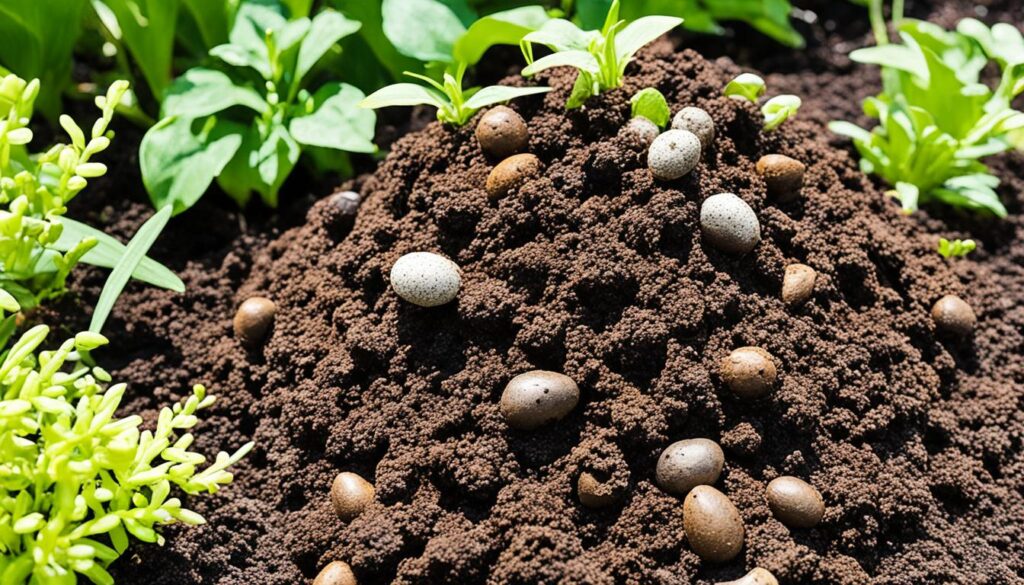
| Animal | Appearance | Size | Composition |
|---|---|---|---|
| Deer | Small, dark-brown pellets | 0.2-0.5 inches in length | Primarily plant matter |
| Rabbit | Round, brown pellets | Varies | Primarily plant matter |
| Bear | Larger, less-formed | Varies | May contain food remnants |
| Elk | Similar to deer scat | Larger than deer scat | Primarily plant matter |
Where Do Deer Usually Poop?
Deer tend to have specific areas where they prefer to relieve themselves, which can provide valuable insights into their habits and whereabouts. Understanding their pooping habits can help you track their movements and optimize your hunting or gardening strategies accordingly.
- Bedding Areas: Deer typically defecate shortly after waking up, near their bedding areas. These areas are where deer rest and seek shelter, such as thickets, tall grasses, or wooded areas.
- Feeding Areas: You can often find piles of deer poop near their feeding areas. Deer are herbivores and feed on various vegetation, so look for their droppings in areas with abundant food sources like fields, meadows, or the edges of forests.
- Daily Roaming: Since deer poop throughout the day, you may come across their droppings almost anywhere they roam. They tend to leave their droppings as they move around their habitat, so keep an eye out for deer poop along trails, near water sources, or even in your own backyard if they frequent the area.
By identifying the locations where deer poop is concentrated, you can gain insights into their daily routines and preferred areas. This knowledge can be invaluable for hunters looking to track deer or for gardeners seeking to understand deer behavior and protect their gardens from deer browsing.
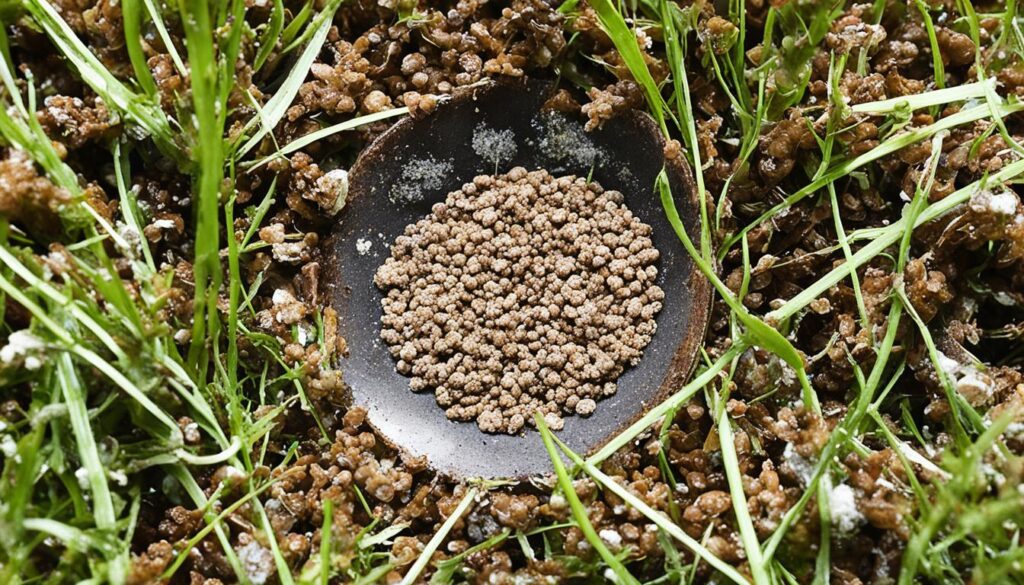
Note: Image above depicts deer poop, providing a visual reference for the topic of this section.
Can I Use Deer Poop in My Garden?
Yes, you can use small amounts of deer poop as a natural fertilizer in your garden. Deer droppings contain a high amount of nitrogen, which is a vital nutrient for plant growth. Nitrogen helps plants produce lush, green foliage and promotes healthy development.
However, before using deer poop as fertilizer, it’s crucial to ensure that the manure has aged properly to avoid potential bacterial contamination. Fresh deer scat may contain harmful pathogens that can pose a risk to human health. It’s recommended to allow the manure to decompose for at least 90 to 120 days before using it in your garden.
The aging process allows any bacteria present in the manure to break down, making it safe for use as a fertilizer. Once properly aged, deer poop can be an excellent eco-friendly option to enhance the health and productivity of your garden.
When applying deer poop, it’s best to spread it evenly over the soil surface and then water it in. The nutrients from the manure will slowly release into the soil, providing a steady supply of nutrition to your plants. Remember to avoid over-fertilizing, as excessive nitrogen content can harm plants.
Benefits of Using Deer Poop as Fertilizer:
- Rich in nitrogen: Deer droppings are packed with nitrogen, a crucial nutrient for plant growth.
- Slow-release: Deer poop releases nutrients gradually, providing a steady supply for your plants.
- Eco-friendly: Using deer poop as fertilizer is a natural and sustainable way to enhance garden health.
- Cost-effective: Instead of purchasing commercial fertilizers, deer poop can be a free and readily available option.
By incorporating deer poop into your garden routine, you can improve soil fertility, promote healthy plant growth, and reduce the need for synthetic fertilizers.
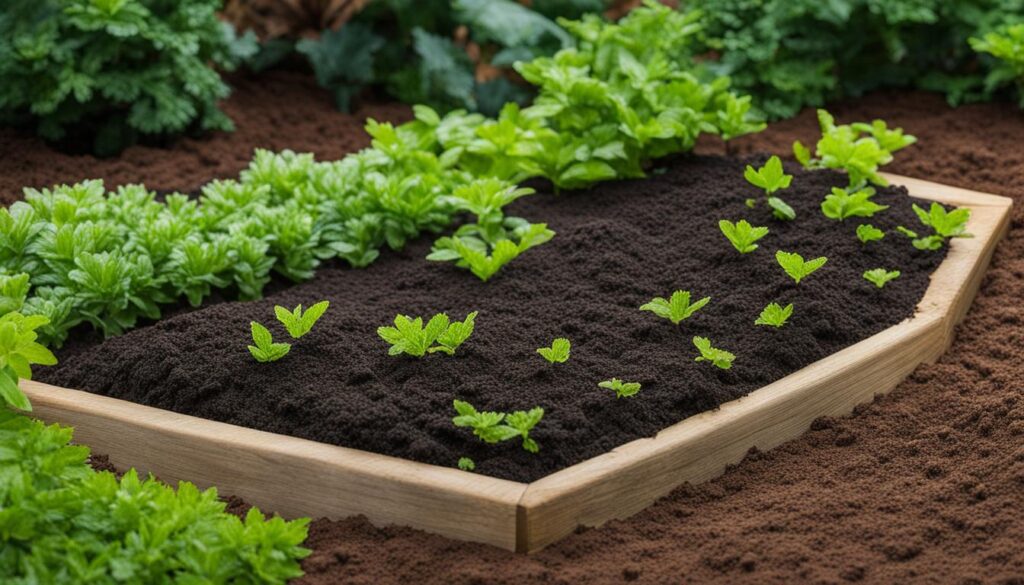
Remember to always practice proper hygiene when handling deer droppings or any other type of organic fertilizer. After handling the manure, wash your hands thoroughly to prevent the spread of bacteria.
Conclusion
Deer poop, also known as deer scat, offers valuable insights into the behavior of these majestic creatures. By understanding the main characteristics of deer poop and being able to differentiate it from other animal droppings, hunters and wildlife enthusiasts can track the movements and patterns of deer. Whether it’s determining where deer feed, bed down, or travel, the presence of deer scat provides important clues.
Moreover, deer scat plays a significant role in assessing the health of your garden. The presence of deer poop can confirm the presence of deer on your property, allowing you to take necessary measures to safeguard your garden. Additionally, scientists rely on deer scat to study herd health, hormone levels, and the presence of diseases like chronic wasting disease.
Understanding the significance of deer poop in tracking wildlife and assessing garden health is essential. By honing your identification skills and recognizing the distinguishing characteristics of deer scat, you can gain a deeper appreciation and knowledge of these magnificent creatures. So, the next time you come across deer poop, remember the valuable insights it offers into the world of deer and the role it plays in tracking wildlife and promoting garden health.
